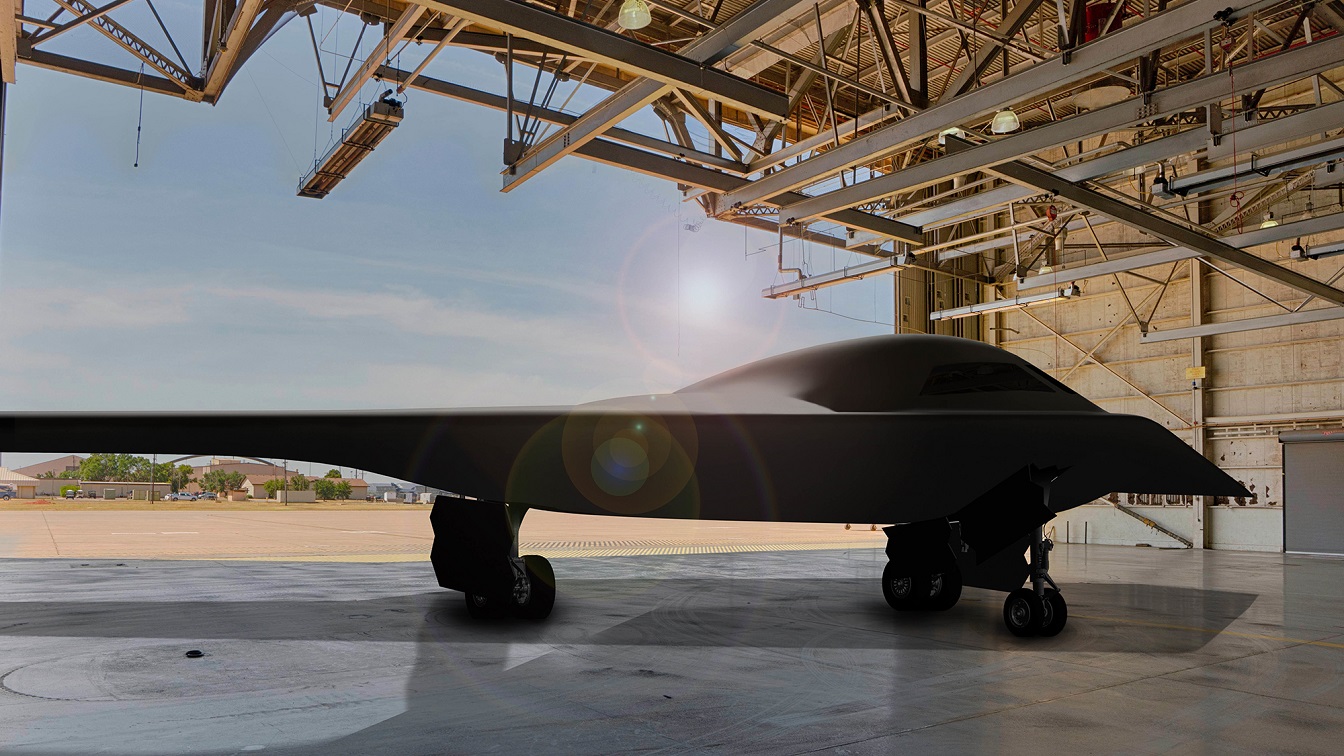The big day aerospace experts and enthusiasts have been looking forward to for months arrives December 2. That’s when the first public unveiling of the B-21 Raider stealth bomber happens in Palmdale, California.
The B-21 has an ultra-long range, premier radar evasion, and three decades of advanced technology development. The U.S. Air Force plans to buy at least 100 of the new bombers and could purchase as many as 170 to 200.
But what if the B-21 is a flop and civilian leadership halts production or even cancels the program at somepoint? Quantities of F-22 Raptors and B-2 Spirit bombers were limited by the Department of Defense due to detractors in Congress and the White House. Could this happen to the B-21?
Congressional Champion Is Enthusiastic About the B-21
So far the B-21 is meeting its milestones. This summer U.S. Senator Mike Rounds of South Dakota, whose state the B-21 will be stationed, said the B-21 is on time and under budget. He also predicted in September that the B-21 was on track to be shown to the public December 2. There is so far no hue and cry to limit the number of B-21s, although that could change if the program suffers from schedule slips or cost overruns.
Each Bomber Will Set the Pentagon Back a Half a Billion Dollars
The order for 100 B-21s will cost $500 million each and $40 million a year to maintain. That maintenance fee is in 2020 dollars – so figure in more with inflation. That’s quite a price tag so there is no room for ballooning costs. The National Defense Authorization Act (NDAA) has fully funded the B-21 program for FY23, in addition to provisions for full funding in the FY21 and FY22 NDAA. The Air Force hopes to see the B-21 achieve initial operational capability by 2025. The B-21 could serve into the 2050s as it replaces the B-1 and B-2 to supplement the B-52 as America’s main strike airplane.
It Will Be the Most Capable Bomber in the Fleet
The B-21 will have the ability to penetrate enemy defense networks and deliver nuclear and conventional weapons after take-off from Ellsworth Air Force Base in South Dakota. The B-21 will also use stand-off cruise missiles that launch from internal bays from the flying wing design. It should not be held captive to anti-access area denial efforts by the Chinese military if all goes according to plan.
Northrop Grumman is betting that the open architecture software and cloud computing used in development of the “digital” bomber will be agile enough to keep delays down to a minimum. The advanced engineering tools used in its design and construction will keep it on track with little changes to its delivery timeline and budget issues should be minimized. Six B-21s are already on the assembly line in Palmdale.
That all sounds great, but what are the downsides? Price could be a factor. Members of Congress could someday have sticker shock if there are cost overruns, even with Rounds as the main cheerleader.
The B-21 has lived a charmed life so far, but trouble can always arise with even the best acquisition programs, especially with an airplane that has so many sensitive systems being built.
Cost was a bugaboo for the F-22. With research and development included, the price of the Raptor became unsustainable at $350 to $380 million per fighter. That’s less than the B-21. The Department of Defense stopped producing F-22s in 2009 when the program had only yielded 186 of the stealth warplanes.
As for the B-2 stealth bomber, only 20 are now in service. This bomber was designed to foil the air defenses of the Soviet Union and when the Cold War ended, it became the victim of “peace dividend” military cuts and new purchases were capped in the early 1990s.
However, with the threat of China and Russia, the Air Force will need the B-21 and more than 100 of the stealth bombers is something that many uniform and civilian leaders of the branch would prefer.
So, there is little question and scant debate about whether the B-21 is needed at this point. It will be a significant leg of the nuclear triad. Moreover, the B-52 is not stealth and will have a more limited role of launching stand-off missiles and may not fly much into contested airspace.
The main way the B-21 could be trimmed would be cost overruns. The digital design techniques and advanced manufacturing features should keep it under budget. We will know more when the B-21 first flies next year.
If that test flight is successful and more of the stealth bombers are ground tested and come off the assembly line, the 100 airplane production goal could be met with flying colors.
Expert Biography: Serving as 1945’s Defense and National Security Editor, Dr. Brent M. Eastwood is the author of Humans, Machines, and Data: Future Trends in Warfare. He is an Emerging Threats expert and former U.S. Army Infantry officer. You can follow him on Twitter @BMEastwood. He holds a Ph.D. in Political Science and Foreign Policy/ International Relations.

